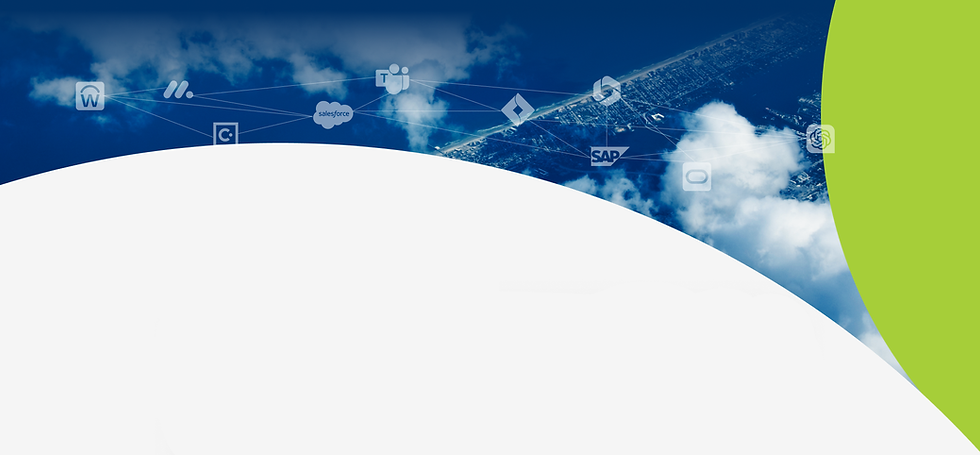


Malynnda Littky-Porath
Short bio about author here Lorem ipsum dolor sit amet consectetur. Vitae donec tincidunt elementum quam laoreet duis sit enim. Duis mattis velit sit leo diam.
Tags
Share this article
6/20/23
Published
The past few years have witnessed a rapid surge in the use of SaaS applications across various industries. But with this growth comes a significant challenge: managing security and assessing risk in application connectivity.
In this blog, I’ll explore the fascinating insights from a recent study conducted by the Cloud Security Alliance (CSA). The study delves into the complexities of managing security and assessing the risk of application connectivity in the rapidly growing world of SaaS applications and cloud environments. With responses from 1,551 IT and security professionals from organizations of all sizes and from all corners of the globe, this study provides valuable insights into the challenges of application security in cloud environments and how to best manage them.
Insight # 1 – Human error is the leading cause of application outages
With more than half of these outages linked to manual processes and the increasing complexity of the systems themselves, businesses are losing productivity, revenue, and even reputation due to downtime.
In many cases, the root cause of these outages is traced back to configuration errors, software bugs, or human mistakes during deployments or maintenance activities.
To combat these issues, investment in automation and machine learning technologies can mitigate the risk of human error and ensure the reliability and stability of their applications.

Insight # 2 – 75% of organizations experienced application outages lasting an hour or more.
The financial impact of outages has been significant, with an estimated cost of $300,000 or more per instance. These costs include lost productivity, revenue, and potential customer churn.
While human error is the major contributor to downtime, outages are often caused by a combination of additional factors, including hardware or software failure and cyber-attacks.
Comprehensive disaster recovery plans, backup systems, and application performance monitoring tools are necessary to minimize outages and ensure business continuity.

Insight # 3 – A lack of visibility and compliance are the primary constraints to rolling out new applications.
Visibility is essential to understanding how applications are used, where they are deployed, and how they integrate with other systems.
Compliance gaps, on the other hand, can pose significant risks, resulting in issues such as data breaches, regulatory fines, or reputational damage.
To ensure successful application rollout, organizations must have a clear view of their application environment and ensure compliance with relevant standards and regulations.

Insight # 4 – The shift to the DevOps methodology has led to a shift-left movement where security is integrated into the application development process.
Traditionally, application security teams have been responsible for securing applications in the public cloud. However, DevOps teams are becoming more involved in the security of applications in the public cloud.
DevOps teams are now responsible for ensuring that applications are designed with security in mind, and they work with the application security teams to ensure that the necessary controls are in place.
Involving the DevOps teams in the security process can reduce the risk of security breaches and ensure that security is integrated throughout the application lifecycle.
Insight # 5 – Organizations are targeting unauthorized access to applications in the public cloud.
Organizations can protect their applications by implementing strong authentication mechanisms, access controls, and encryption to protect sensitive data.
Using the principle of least privilege can limit application access to only authorized personnel. cloud infrastructure is secure and that vulnerabilities are regularly identified and addressed.
Organizations must review their security requirements, monitor the application environment, and regularly update their security controls to protect their data and applications in the public cloud.
Insight # 6 – A rapidly evolving technology landscape has created skills gaps and staffing issues
Specialized skills are not always readily available within organizations, which can result in a shortage of qualified personnel. This can overburden teams, resulting in burnout and increased staff turnover.
Staffing shortages can also lead to knowledge silos, where critical skills and knowledge are concentrated in a few key individuals, leaving the rest of the team vulnerable to knowledge gaps.
Organizations must invest in training and development programs to ensure that their teams have the skills and knowledge necessary to succeed in their roles.
Successful cloud migrations require a comprehensive knowledge of cloud security controls and how they interconnect and collaborate with on-premise security systems. To make this happen, organizations need complete visibility across both cloud and on-premise environments, and must automate the network security management processes.
To sum up, the rapidly evolving threat environment demands new ways to enhance security. Proactive risk detection, powerful automation capabilities, and enhanced visibility in the cloud and outside of it are just a few ways to strengthen your security posture. AlgoSec can do all that, and more, to help you stay ahead of emerging threats and protect your critical assets.. Even better, our solution is ideal for organizations that may lack in-house expertise and resources, complementing the existing security measures and helping to keep you one step ahead of attackers.
Don’t miss out on the full insights and recommendations from the study. Click here to access the complete findings.
Related Articles

Speak to one of our experts




